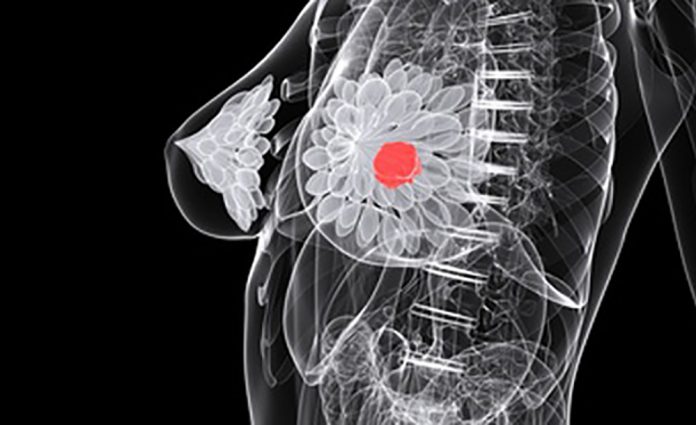
Scientists have learned that inhibiting the activity of the PRMT5 gene shuts down the growth of metastatic estrogen receptor-positive (ER+) breast cancer cells after they acquired resistance to therapy with CDK4/6 inhibitors.
Doctors have increasingly treated metastatic ER+ breast cancers by combining drugs that degrade or block the estrogen receptors on breast cancer cells in combination with CDK4/6 inhibitors. While CDK4/6 inhibitors have improved the survival of patients with ER+ breast cancer, they aren’t a cure. Nearly all patients treated with these drugs—which include abemaciclib, palbociclib, and ribociclib—eventually develop drug resistance and disease progression.
Researchers know the RB1 loss-of-function alterations lead to CDK4/6-resistance but treatment options are not well-established. With the increased use of CDK4/6 inhibitors as the standard-of-care for ER+ breast cancer, finding novel therapeutic strategies to treat RB1-deficient metastatic breast cancer will become increasingly important.
In a study published in Nature Communications, researchers from UT Southwestern Medical Center performed a genome-wide CRISPR screen on cells from two ER+ breast cancer lines to delete RB1—making them resistant to all three FDA-approved CDK4/6 inhibitors approved by the U.S. Food and Drug Administration. They then screened more than 19,000 other genes, searching for those that might play key roles in cell survival and growth. Their investigation homed in on the protein arginine methyltransferase 5 (PRMT5) as a molecular vulnerability in ER+/RB1-knockout breast cancer cells.
When the researchers reduced the amount of protein produced by PRMT5, the cells got stuck in a part of the cell cycle known as the G1-S transition, in which DNA is copied before cells divide. Further investigation showed that PRMT5 helps regulate many genes involved in DNA replication. Proteomics analysis uncovers fused in sarcoma (FUS) as a downstream effector of PRMT5. Inhibition of PRMT5 results in dissociation of FUS from RNA polymerase II, leading to hyperphosphorylation of serine 2 in RNA polymerase II, intron retention, and subsequent downregulation of proteins involved in DNA synthesis.
When the researchers administered pemrametostat, a PRMT5 inhibitor, along with fulvestrant which degrades estrogen receptors, in patient-derived ER+ xenografts with RB1-deletion in mice, the dual treatment blocked these tumors from growing significantly better than either treatment alone, putting the animal models in partial remission.
“To the best of our knowledge, a targeted therapeutic approach against these cancers once they progress on CDK4/6 inhibitors has not yet been established,” the authors wrote. “Thus, PRMT5 represents an actionable therapeutic vulnerability in breast cancers of this genotype and potentially fulfills an unmet need for patients with acquired resistance to CDK4/6 inhibitors.”
In addition, the team suggests their findings highlight dual ER and PRMT5 blockade as a potential therapeutic strategy to overcome resistance to CDK4/6 inhibition in ER+/RB-deficient breast cancer and may lead to new options to treat metastatic ER+ breast cancer, the most common subtype that is responsible each year for the most deaths from this disease.
“Combining an anti-estrogen therapy with a drug that inhibits PRMT5 could eventually offer a new way to treat patients resistant to CDK4/6 inhibitors, who often have few options left,” said first author Chang-Ching “Albert” Lin, PhD, assistant professor at UT Southwestern.












